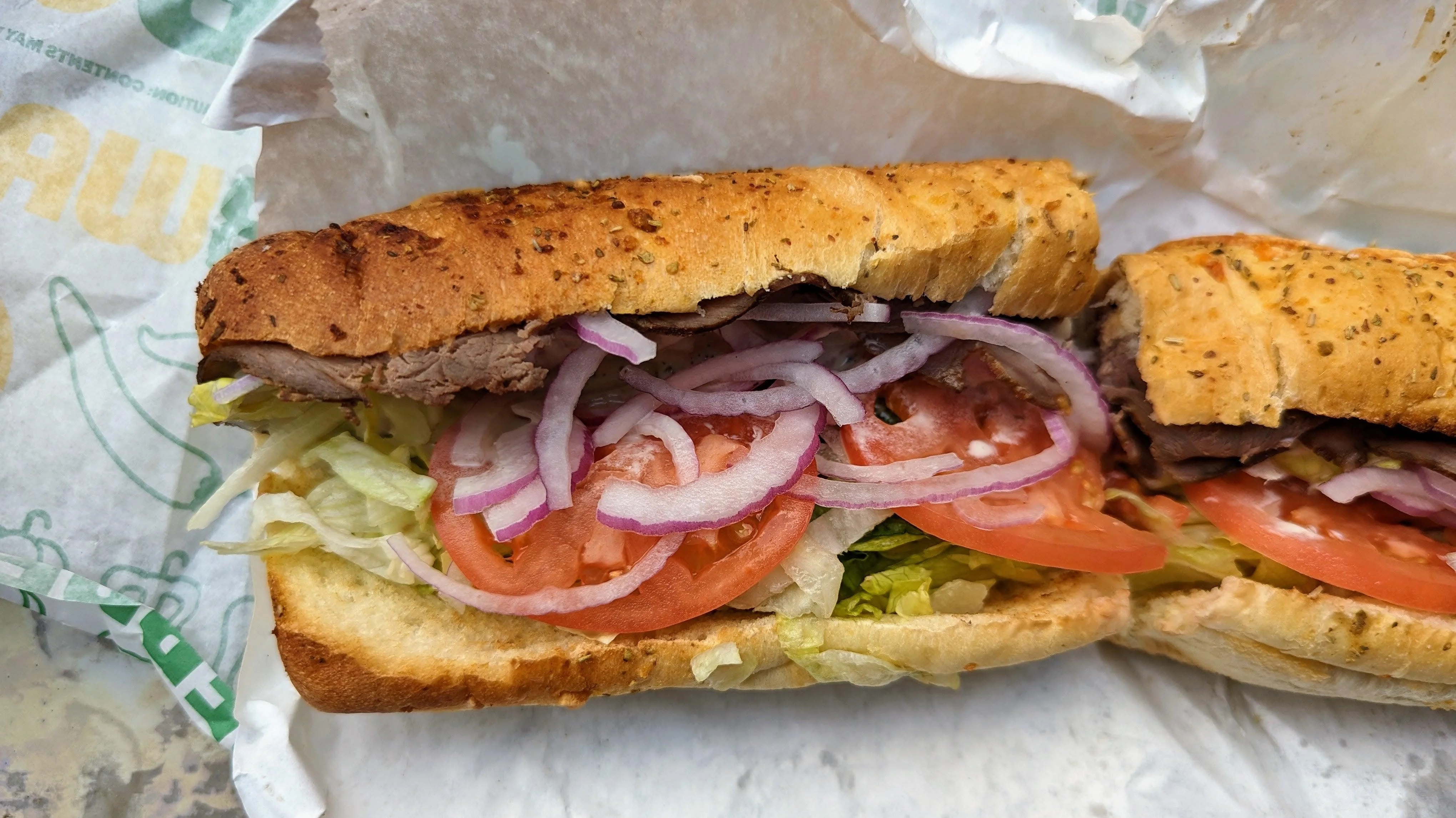America Has An Unfathomable Amount Of Subway Locations
See if you can wrap your head around the sheer number of fast food restaurants in the U.S.
If I tell you a sandwich is "big," that doesn't actually tell you much at all, does it? "Big" could mean a lot of things: that it's piled high with ingredients, that it's super popular, that it had a lot of marketing dollars thrown behind it. Similarly, when we talk about the nation's "biggest" fast food chains, we could be talking about sales, growth rate, or foot traffic, among other things. Thanks to the annual Top 500 Report from Nation's Restaurant News, we know which restaurants are doing the best by every measure—and one of the most interesting metrics is each brand's number of locations. Can you guess which restaurant outstrips them all?
America’s most popular fast food chain (kind of)
It's not McDonald's. It's not even Starbucks. The chain with the most locations in the U.S. is Subway, and it's not close. While there are 13,667 Golden Arches outposts nationwide and 15,396 Starbucks, Subway boasts 20,576 U.S. units as of 2022, according to Nation's Restaurant News. And that's even after accounting for a 2.7% loss of units across last year.
These numbers might be surprising, given that McDonald's is by far the top fast food chain in terms of sales—$48.7 billion systemwide last year. By contrast, Subway sits in eighth place, with $9.2 billion in sales. But it makes a lot more sense when you think about how Subway earns what it does.
Why Subway has so many locations
Lest you think fast food runs on a pure meritocracy (and we hope you don't think that), Subway didn't grow to 20,576 locations by simply serving the best sandwiches in America. As John Oliver explained in a thorough Last Week Tonight segment on the chain, Subway has been aggressive about franchising for 50 years, as co-founder Fred DeLuca believed almost from the start that having tons of locations would "create the image of success."
It's very easy to open a Subway franchise: The startup cost for a new Subway is around one-fifth the cost of opening a new McDonald's, and since sandwiches rely largely on low-prep ingredients, no complex equipment like deep fryers are required. The relatively low barrier to entry makes Subway an attractive option for immigrants looking to start family-run businesses in the U.S.
But for as easy as it is to open a Subway, it's very difficult to actually operate one, much less close one. The margins at Subway are thinner than other chains, especially when Subway corporate promotes specials like the $5 footlong, which can all but eliminate franchisees' profits. Subway HQ also takes a bigger contractural bite out of profits than other fast food chains, and any franchisee who decides to prematurely close their location still owes royalties to Subway for three more years.
Subway as a company is doing better in recent months than it has over the past decade, with a revamped menu and "improved" sandwiches leading to increased sales. This might lead to even more locations in the coming year, making Subway all the more untouchable by other brands. At the very least, we hope that the chain's increased success means more per-unit sales and less of a raw deal for the franchisees who keep it propped up at the top of the list.
